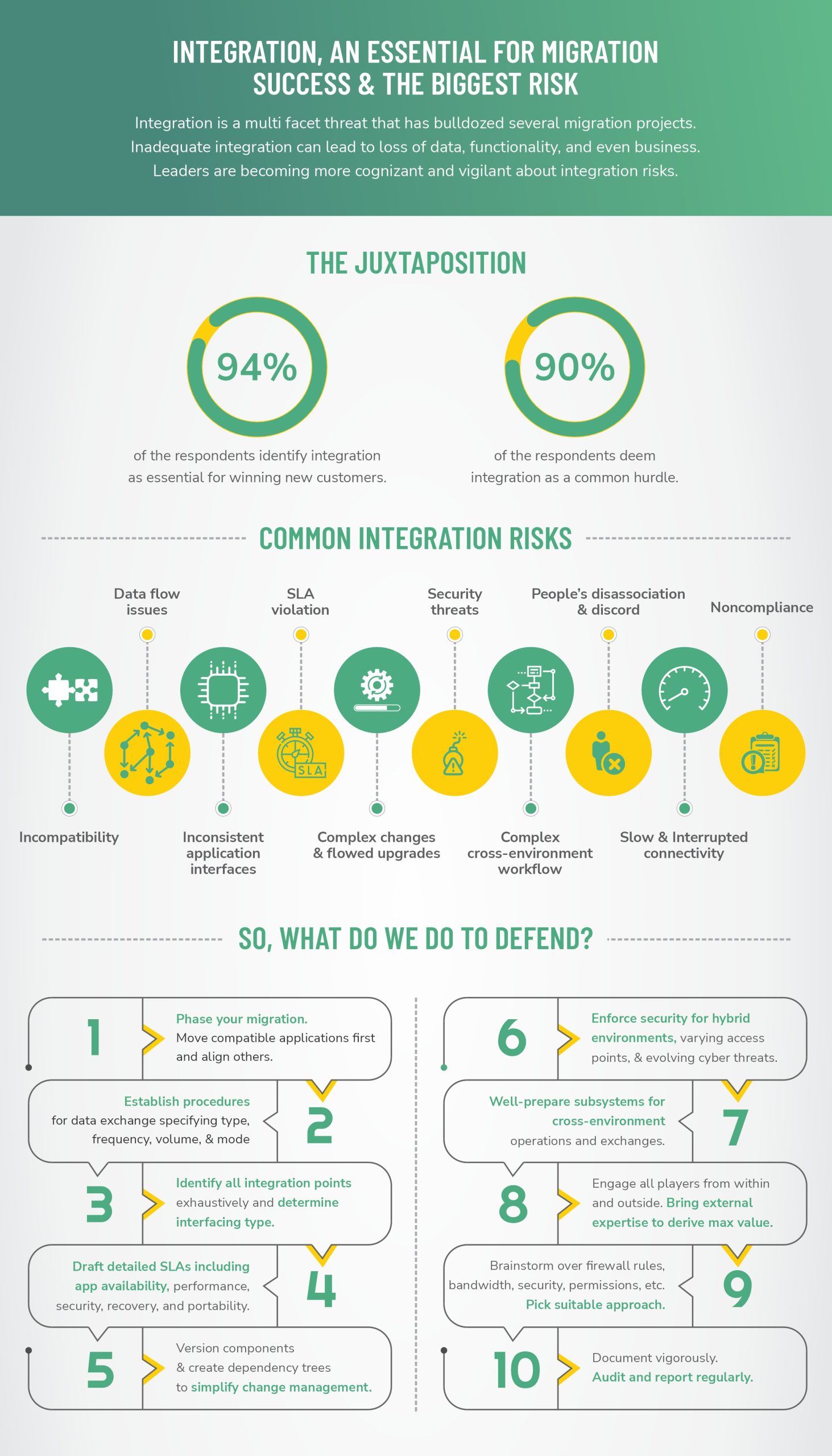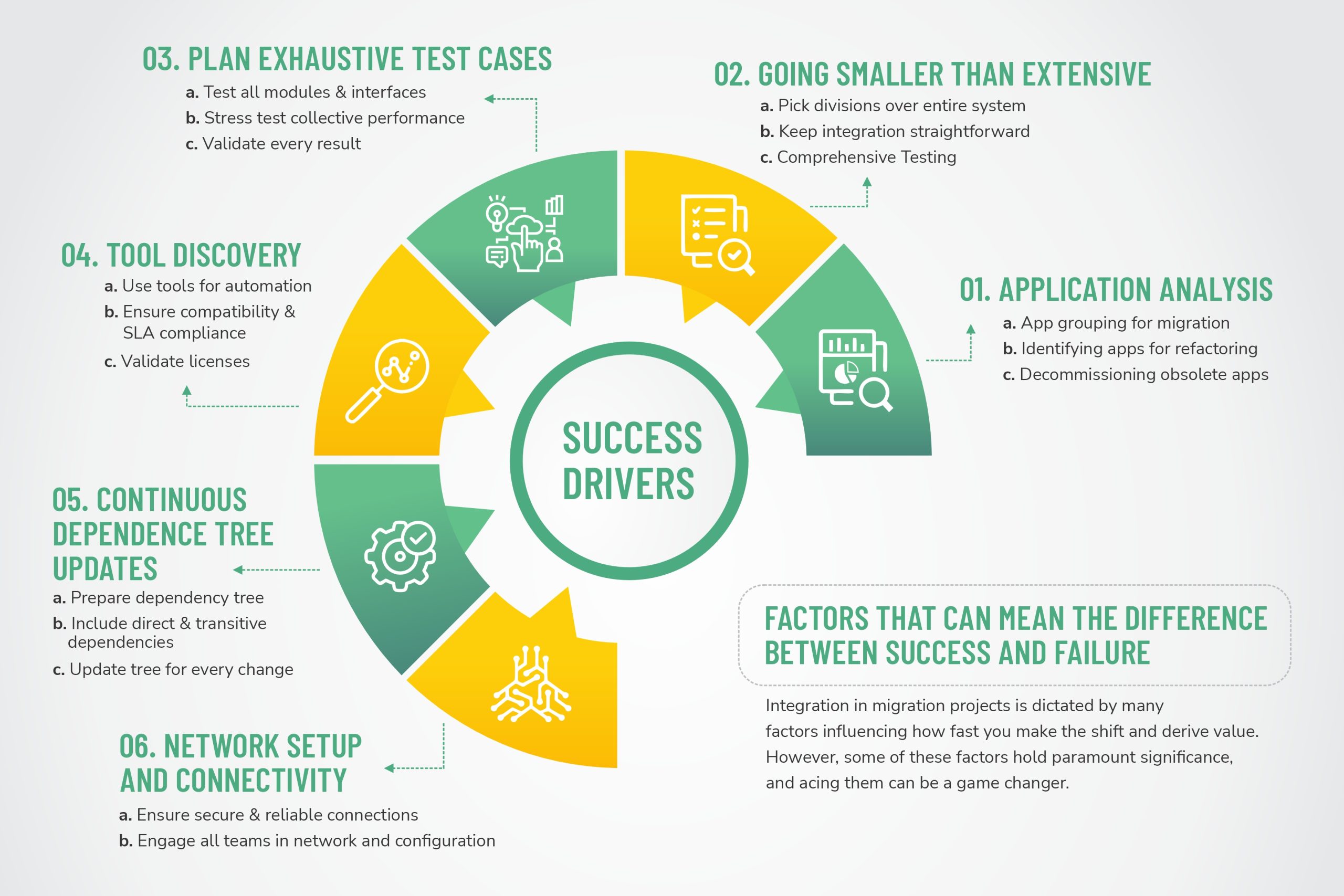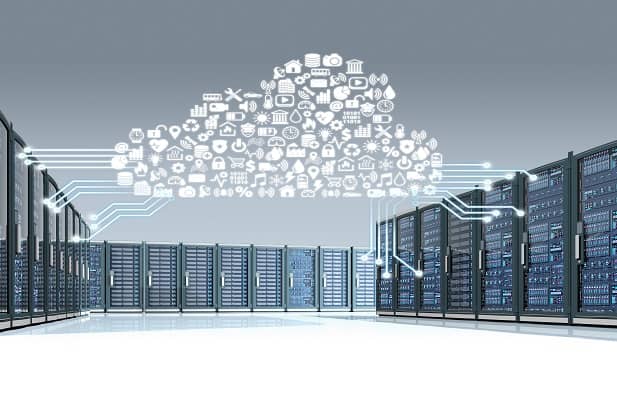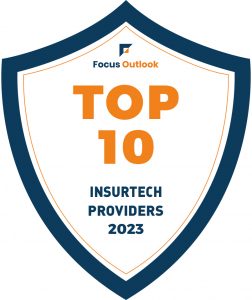Many technology enthusiasts speak of the benefits of migrating legacy applications to a cloud-based architecture. While it certainly lowers the total cost of ownership and delegates greater flexibility, it presents new challenges for application owners. Many of these challenges are related to integration. In a recent study, 94% of the respondents find integration essential to winning new customers, while 90% consider it the most common hurdle in business.
The migration factor that is essential for winning customers is also the biggest migration challenge.
 During mainframe migration to cloud, applications perform across diverse environments, including on-premise and cloud or even hybrid. Adopting models like PaaS and IaaS further increases the hardship of the migration.
During mainframe migration to cloud, applications perform across diverse environments, including on-premise and cloud or even hybrid. Adopting models like PaaS and IaaS further increases the hardship of the migration.
Enterprise leaders must think through how their applications are interoperable and devise an effective integration and connectivity strategy based on the latest technology trends.
Here are some challenges leaders must address for successful mainframe migration to cloud and effective utilization of the cloud’s potential.
Table of Contents
Compatibility risks between apps and components
Legacy application designs lack the capabilities to perform on cloud. It is crucial to modify / retool these applications, which given their strong coupling, can be challenging. Further, apps must be compatible with many newer and existing components and tools during and after mainframe migration to cloud .
One way to achieve compatibility and assure performance is to migrate in phases.
One possible approach can be the following
- Pre-Migration: Move Data to the target environment and concurrently update it as per the source environment. This ensures data validation and zero loss of data.
- Phase 1: Migrate the applications that have high compatibility.
- Phase 2: Align the network of migrated applications with systems such as Postman / OpenAPI protocols among others and hence making them easily interoperable with the current standards.
- Phase 3: Archive and decommission the obsolete applications and rearchitect others for cloud compatibility.
Risks due to data flow dependencies
Mainframe migration to cloud projects involve data living both in the mainframe and the cloud. Managing data streams from diverse sources residing in the modern environment and huge on-premise silos like that of a mainframe is an uphill battle for enterprise leaders.
Effective import, export, and ETL are crucial in application performance, analytics, and reporting. However, this becomes hard to achieve due to inadequate application interface capabilities and data islands.
In the modern enterprise data barely stands alone. Instead, it comes from various sources to diverse applications for consumption.
The app owners must ensure seamless and secure data flow across the enterprise network and prevent the formation of new silos. They must establish well-defined data access procedures and upstream and downstream flow controls across platforms.
Even for the most tech-savvy enterprise, it is paramount to understand that data transformation is a constant journey, not a quick fix.
Apart from defining the flow of data, it is also crucial to determine the data exchange type. Several factors collectively impact the data exchange process and help determine the most suitable method of exchange between integrated applications.
- Type of datasets: Data coming into an enterprise can be structured, unstructured, or semi-structured based on its source. Organize must logically group the data and transform for consistency and effective transfer between modules.
- Frequency of transfer: Another important consideration is identifying the frequency of data exchange between apps. Identifying maximum traffic helps establish the right support technology and tools.
- Data transfer volumes: Applications operate on massive datasets and are interdependent in acquiring them. Application owners determine data volume in terms of the number of records fetched, transformed, and stored by apps. Identifying the maximum load is crucial to stress-testing applications’ exchange and performance.
- Exchange modes: Designating a definite exchange mode helps ensure secure data transfer between app modules. The integrated apps can exchange data through data exchange platforms, MQ, or FTP.
- Best data transfer method: Enterprise leaders must evaluate data transfer methods for security, mode(online/offline), required bandwidth, transfer tools, cost, and latency to identify the best one.
Risks between interfacing applications
Mainframe migration to cloud could result in applications deployed in hybrid environments: on-premise and cloud. Developers must build appropriate APIs for interaction between cloud-based apps and existing ones.
Identifying all possible integration points and determining the type of interface is critical. Interfacing can be online, offline, batch, asynchronous, or synchronous. It requires analysis of factors like the utilization of message queues, sockets, and more.
Risks due to Data exchange SLAs
When multiple applications in heterogenous environments perform together, SLAs must address the expectations regarding their interactions. These specifications define data exchange in the following terms.
- Availability or accessibility: For instance, retrievability of data during working and weekdays or reporting at a given time.
- Performance: As in the application’s response time to deliver the required data in the appropriate format
- Security: For example, encryption and other measures to safeguard data during storage and transmission
- Recovery: Considering expected downtime and data recovery in the worst-case scenarios.
- Portability: It concerns the movability of data to different providers if required.
Consequently, defining application SLA becomes core to the way the new environments capability gets leveraged. In the new computing world where horizontal or vertical scaling is now the norm data exchange SLAs become critical for maximizing performance and optimizing costs.
Risks due to application & component revisions
Backward compatibility is difficult to achieve with standalone applications, this gets compounded during migrations and applications which interface with each other. During migration, applications or their components may change for compatibility or capability enhancement. It is critical to ensure consistency in their behavior and data/instruction exchange. The following pointers help assure the anticipation and minimize the impact of changes on the other dependent modules.
- Component versioning: Understand which version of the application the dependent components expect.
- Platform component change: Understanding the impact of switching platform components.
- Dependency tree revision: Understanding change’s overall impact by updating the existing dependency tree
Security Risks
Open backdoors, application vulnerabilities, untested access restrictions all are a threat to the application. Applications built on mainframe especially that are built with batch processing in mind are thought to be self-contained and are not easily accessible over the web. Moving such applications to a now concurrent or distributed environment would mean rethinking the application and data security of the application and if not well thought out could lead to security breaches or worse improper transactions.
A widened data access emphasizes the need for encryption and enforces other security techniques. The integration solution must effectuate robust authentication and authorization methods for access control, especially in multitenant environments.
Integration risks between source and target environment
Mainframe migration to cloud is a drastic change in the applications’ environment. While the mainframe systems are largely monolithic architectures, cloud-based applications involve containerizing them. Most organizations depend heavily on legacy systems and must keep them for some critical applications.
In such scenarios, application integration involves cross-environment interfacing. Components and subsystems must be well-prepared for integration to avoid inconsistencies and service outages while shifting or post mainframe migration to cloud.
Networking and connectivity issues
Connectivity and networking significantly impact the mainframe migration to cloud project’s smoothness. There is no shortcut to set up the connectivity correctly. App owners must think through issues like firewall rules, bandwidth, network security groups, ungranted permissions, domain controllers, and more.
When considering mainframe migration to cloud, the following three API-based approaches are helpful.
- Public internet connection: Less predictable. Reliance on ISP’s capacity and routing.
- Direct peering: Fewer hops with a direct connection between private and cloud provider networks.
- Cloud interconnection: Consistent throughput for large data transfers with established connectivity and performance SLAs.
Compliance and Governance risks
Mainframe migration to cloud and post-migration operations involve massive data exchanges among different platforms. It calls for robust monitoring and governance to ensure availability, usability, and integrity. Enterprise leaders must establish governance standards and audit processes to validate compliance.
Businesses must ensure compliance among app owners, service providers, and statutory bodies. They must adhere to the SLAs regarding regular audits and reporting, specifically to statutory bodies and their liaisons. Compliance in a cloud environment can be a shared responsibility that makes it even more challenging.
Success factors
Modernization of legacy systems is complex but inevitable in the present times, and so is integration during the process. Integration during mainframe migration to cloud is blending different applications, services, platforms, and environments. It is a highly complex bid that can catalyze business performance to all new heights.
Here are some factors that mitigate the risks and drive successful mainframe migration to cloud integration.
 Factors that ensure the success of your mainframe migration to cloud project
Factors that ensure the success of your mainframe migration to cloud project
- Application analysis: Analyze your applications comprehensively. Identify groups that are compatible for migration and need refactoring and decommissioning.
- Going smaller than extensive: Small and straightforward integrations are more manageable and easier to achieve. It helps realize outcomes quickly and proliferates the reliability of migration projects.
- Comprehensive testing: Testing every application and all its modules are imperative. Test cases must assess individual modules, their interfacing, and collective performance. There must be comprehensive test plans to evaluate the impact of changes across the entire dependency tree.
- Tool discovery: Validate licenses Application owners must analyze and pick the most suitable tools for data transfer, testing, networking, and other purposes. All these components must be compatible and synchronize SLAs, standards, and business goals.
- On-going revision of the dependency tree: Application dependencies are complex. Identifying all direct and transitive dependencies is crucial for every change to avoid glitches and surprise outruns.
- Connectivity and network setup: Enterprises can use automated tools or create their network and integration repository. Application owners, service managers, support people, and admins should collaborate to set up connectivity and firewall rules for secure and reliable exchange.
Conclusion
Mainframe migration to cloud especially with an integration objective is fraught with many risks as discussed above.
Many incumbents prefer moving the application first and then think of integration opportunities later. There is no prescribed formula for success in such situations.
However, there is no reason to stand still and deprive the business of the competitive edge moving to a modern environment can provide.
A critical step to success in mainframe migration to cloud is to team up with seasoned experts for application modernization. We at Kumaran Systems pride ourselves as being specialist integrators with expertise in migrating legacy systems to new environments. We begin with a quick win approach and move to a refactor / re-platform approach to ensure compatibility and smooth transition. Having decades of experience in this field we can provide in-depth insights into how to leverage and make the best of migration investments.



